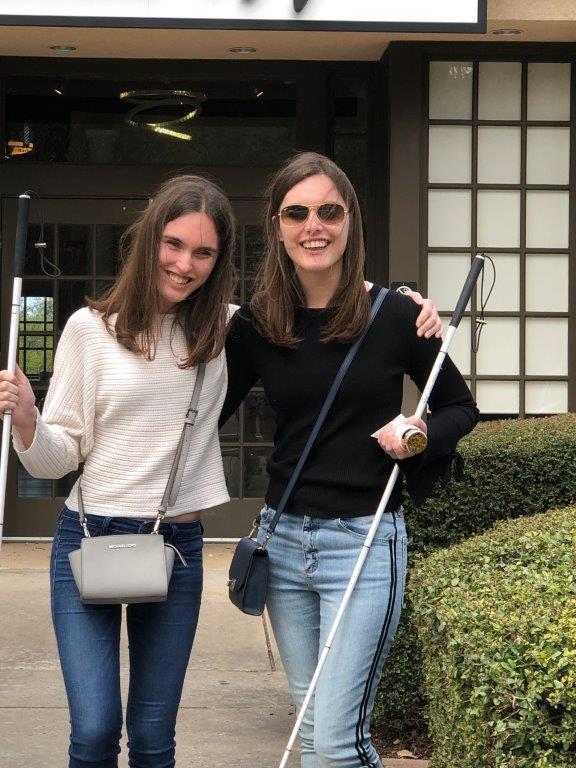by Nicole Lyssy

Even though the white cane is the universal symbol for blindness, I think of it as the universal symbol for independence. As a person who was born completely blind, my white cane is always within reach, and I can't imagine where I'd be without it. It is my key to a world that offers endless opportunities and excitements, challenges and plenty of laughter along the way.
I don't remember much about my first cane. I've seen it before, because my parents are the kind that keep everything sacred in the attic of our home. It was a tiny thing, small enough to support a 3-year-old as I learned to walk with the cane in my right and, always, [learned] how to to navigate a world that probably seemed small at the time. The canes I remember from my early childhood into my adolescence were ones that folded up neatly and could easily be tucked under a chair, beside me on a moving school bus, under a foot in the cafeteria. I didn't know there were other options until I received my first NFB straight cane at fifteen, as part of a NFB mentoring event. It was sleek, slender, and pearly-white, but ultimately its inability to collapse meant it could only be used in situations where I could hold it in the crook of an arm, or set it down on the floor, hoping it wasn't sticking out or in the path of another person. When I discovered the NFB folding cane, my life became so much easier: it was all the things I loved about the straight cane, with the collapsibility I needed for my on-the-go lifestyle.
No matter the style of cane, the independence I am granted, the agency over my body and where I choose to go, is a gift. I can take a quiet walk in my childhood neighborhood on a March day when the world feels like it is permanently on pause, or I can traverse a bustling convention center full of writers scrambling for their next coffee before a panel at the Association of Writers conference, or I can walk into a classroom where eighteen students address me as "Professor". I am an equal and active member of society in large part due to the travel I can do, completely independently, with my cane.
I wish the general public knew that a cane is not scary, but rather is a tool to help me live my best life. It is perfectly okay to verbalize where you are standing so I won't accidentally tap your shoe or boot or stiletto with my cane, though if I do, it won't hurt too much, I promise. And finally, I hope the general public knows that a cane is a small part of a larger story, a story that has "everything and nothing" to do with blindness, a story that has hopes, dreams, magic, trials, and everything that makes this life worth living to its fullest.